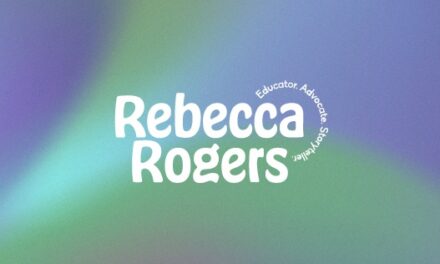The following is the first in a series of eight articles on Marketing to Millennials (aka, Digital Natives), and is an excerpt from a chapter in the book, Dancing with Digital Natives: Staying in Step with the Generation That’s Transforming the Way Business is Done. The full chapter is titled: “Adapting Old-Fashioned Marketing Values to the Needs of the Digital Native” and is written by Michael P. Russell. The book is available through Amazon, Barnes & Noble, and other retailers in e-book and print format. See the end of this page for related articles.
Digital natives have a heightened expectation of immediacy in their desire to gain information and be able to react to it now. A key element in gaining and keeping the attention of this generation is to regularly modify and update your product and message. Don’t be stagnant. Keep the message simple and to the point. Accustomed to the rapid evolution of the tools that they use, digital natives want something fresh from companies trying to market to them.
The technology that digital natives have grown up with and are adept at using — these new channels marketers speak so much about — also offers quick and easy access to them. Online social networks, blogs, and mobile phones offer instant two-way communication and one-to-many communication. These channels are much more personal in nature, and in the case of the mobile phone, always with them. Leverage this access to make quick adjustments or improvements in a shorter time cycle. But beware: While social networks are now a regular aspect of digital natives’ daily activity — they check and update their profiles several times a day — they visit with a purpose and are not interested in being interrupted by advertising that will draw their focus from the task at hand. They filter out extraneous information that does not relate directly to their interests. That said, these new bi-directional communication channels do let companies get a sense of whether their marketing is having the desired effect much sooner.
Although Millennials appear to be brand focused, they do not seem to be all that brand loyal. A poor experience can sink a product in the blink of an eye. The fundamental rules of marketing apply. The language may be different; the places to interact may have changed; the channels to reach potential customers may have increased as well. However, creating awareness, eliciting trial, fostering adoption, and earning customer loyalty are still fundamental objectives.
Moving beyond one’s ability to send a letter, email, or place a call to a company in regards to a product, social networking and blogs have expanded the range, reach, and lifespan of an opinion a consumer may put forth about a product. Viral marketing can be a double-edged sword. Social networks are not just a way to connect and stay up to date with what is going on with everyone; in large part, these are platforms for self-promotion and self-branding. Thus, enabling these customers to develop status with relation to your product can be beneficial to both you and them.
Engage and Interact With the Market
Engage this generation with marketing that calls them to action. Interaction provides natives with a sense of contributing, which feeds into their propensity for teamwork. YouTube provides myriad examples of how digital natives in particular like to create their own version of a music video or commercial. Encourage this behavior with a marketing effort that requests customer feedback and guidance. It will be a precarious tightrope to walk. The technology enables users to siphon off some of the company’s control over message, as their input is immediate and broad, and their responses are not filtered by the corporate brand first.
To effectively reach the digital native market, use all of the tools and channels at your disposal. Don’t fall into the assumption that you can only connect with them via their mobile devices or PCs. As we saw at the beginning of this chapter, old media still have the power to capture this generation’s attention, and ignoring traditional channels will result in missed opportunities. It is increasingly important for companies to have an integrated, multifaceted approach. Have one piece or channel build upon the others, and link them so that customers can seek out the next piece and assist you in spreading the word by posting various elements on blogs and social networks. Adopting the Millennial’s language, imagery, and practices will help as well. However, I must reiterate that a company that expects to gain these customers by just using the new technology to market a product that was not developed for their needs will not see the impact that it was hoping for.
Companies need to be extra careful about how they view the customers — trying to see the product through their eyes, and not being blinded by their own preconceptions about how it should be used. For example, while doing research in the mobile space, a big growth spot for Millennials, I encountered a company website that referenced developing regions of the world. It indicated that in these regions, where PCs are less ubiquitous, mobile phones are becoming the primary means of accessing internet content. Yet, barely a paragraph later, the company makes the blanket statement that “consumers want — and expect — a PC-like experience on the mobile phone.” This makes no sense. People living in developing regions who have little to no exposure to the internet via PCs are clearly not expecting “a PC-like experience” on their mobile phones. Here is an example of a company projecting its preferences onto the market regarding what mobile should be on a global level. It seems to be openly disregarding the differences in various people’s habits and needs.
It is important to recognize that digital native consumers do not want to stand idly by and just accept what companies want to sell to them. They are not only looking to engage in immediate feedback to improve products available to them, but they are voicing those impressions through blogs, social networks, and corporate sites. Potential consumers can easily access these views by means of a search on the products they are interested in. While a letter to a company, or an email for that matter, is limited to the two parties involved, comments posted on the web have a much broader and longer-lasting impact. Microsoft’s “Automotive Industry Survey — Millenials’ Technology Preferences,” conducted by Wakefield Research in April 2010, highlights this generation’s desire to also interact with companies and brands through multiple technology channels. Ford, for example, is launching an effort to introduce the new Ford Fiesta by tapping into newer technology. The company believes that this generation has not yet established a preference for car brands, and Ford wants to win the group over by using “young trendsetters” to create excitement around the Fiesta by driving the vehicle and spreading the word via social networks.
There are some good and some not so good aspects to Ford’s approach. It has tapped into the social networking, word of mouth, and peer references, but it is brushing past some other elements that Millennials are known for. There is an assumption that younger buyers will want to break away from Honda, Toyota, and Nissan, as these are the brands that their parents drive. However, a 2006 TRU study states that this is a generation that respects and looks for input from their parents on major decisions. Therefore, it would make sense that they would take guidance from their parents about which make of vehicle to purchase.
Even following Ford’s logic, it is unclear why Millennials would gravitate to a brand that has been in the market for 30 years. “This new car embodies the very essence of Fiesta — fun, vitality and emotion,” said John Fleming, president and CEO of Ford of Europe. “We know there isn’t a better name for the new model, and we have over thirty years of investment in the Fiesta brand to consider.” The question to ask is whether the brand currently carries any credibility with those the Millennials admire or aspire to be like. Has the vehicle been developed with their wants and needs in mind? The latest model was designed and sold in Europe and Asia and is doing quite well there, since demand for quality smaller vehicles is high on these continents. However one wonders about the claim that the instrument panel has been designed in a “futuristic” layout similar to that of a cell phone. Futuristic, really? Cell phones are old news! Apparently, the company actually believes that being similar to a cell phone will win over the Millennials because they are avid cell phone users. Simply relating the design to another popular device, which not incidentally has a completely different benefit delivery, is talking down to this desired target market.
It is important to keep in mind that Millennials are also looking for things that are genuine. Digital natives are savvy to the fact that they are being advertised to. Thus, it seems unlikely that they will be swayed by the “Ford Fiesta Agents” posting pictures, videos, and endorsements to blogs and social networks when they know that Ford has provided the agents with the vehicles so that they can be evangelizers for the product. The agents are even assigned activities to post about. Regardless of the fact that these canned testimonials may negatively affect digital natives’ opinions, to have any chance of being effective, these activities need to reflect what the Millennials regularly do in their daily lives. It is possible that after the six-month “free” period, when it becomes clear how many of the agents actually spent their hard-earned cash to own a Fiesta outright, the agents’ views will carry more persuasive weight. While I give credit to Ford for making an effort to add new avenues to their marketing and advertising, I get the sense that its efforts still rely more on pushing their developed product into the market, instead of listening to the market and meeting the needs of the Millennials.






